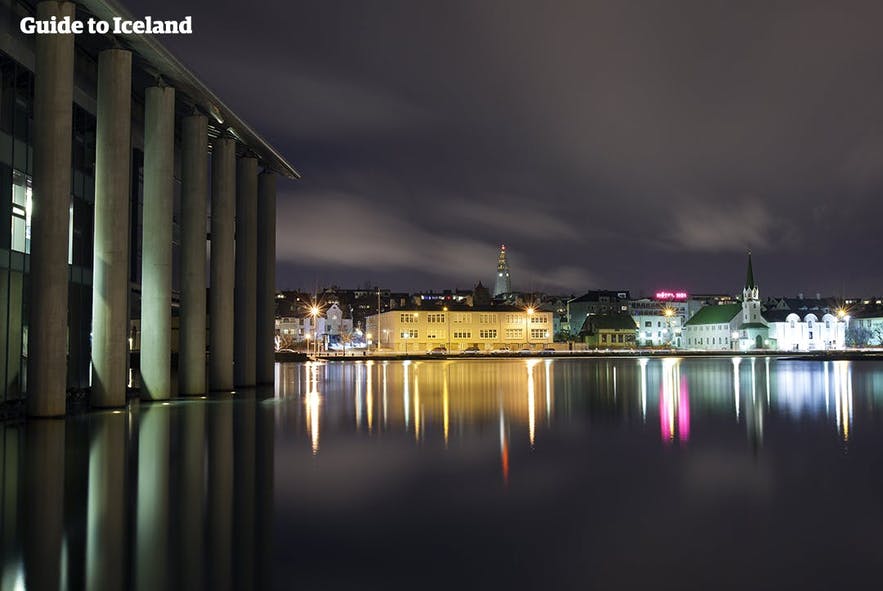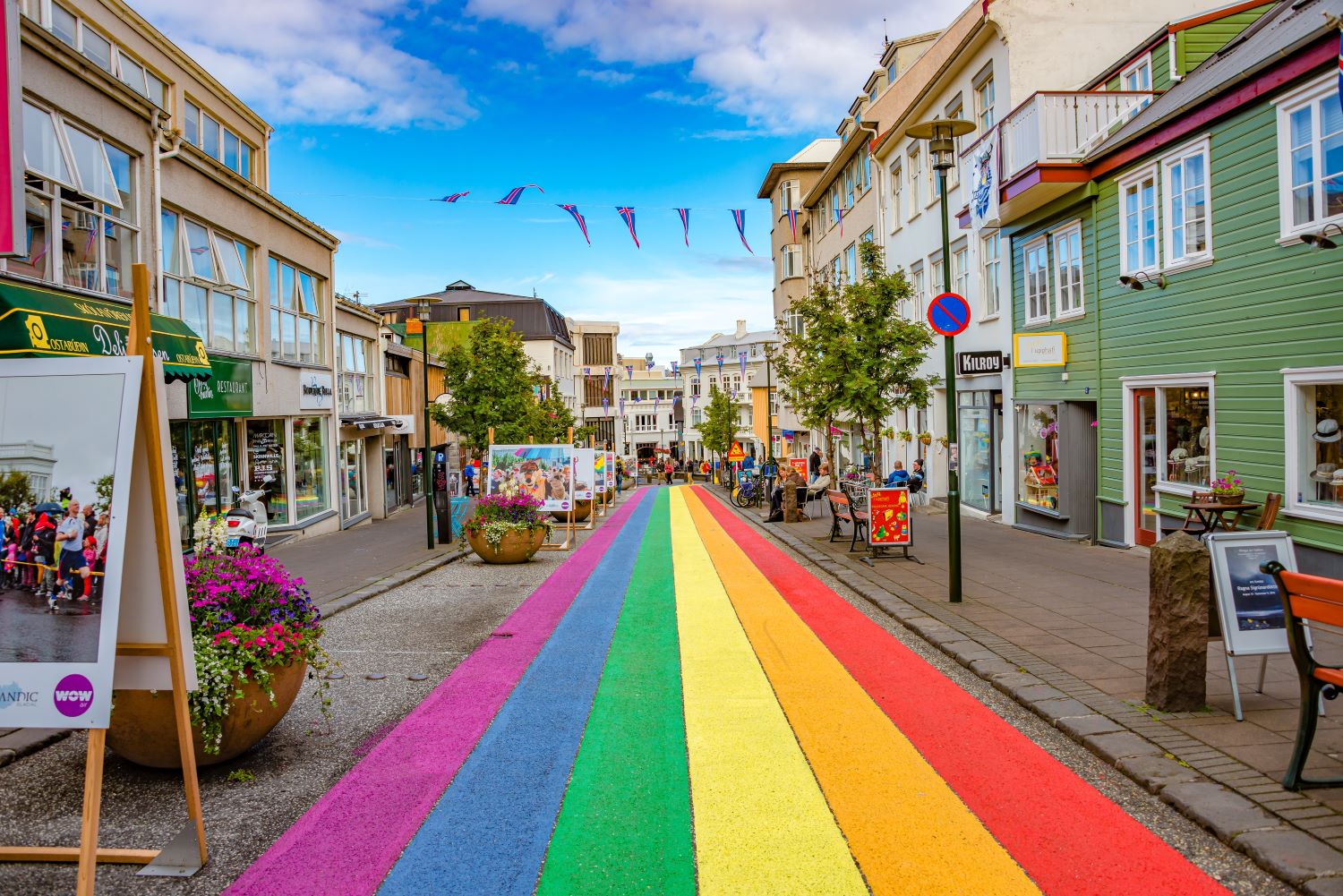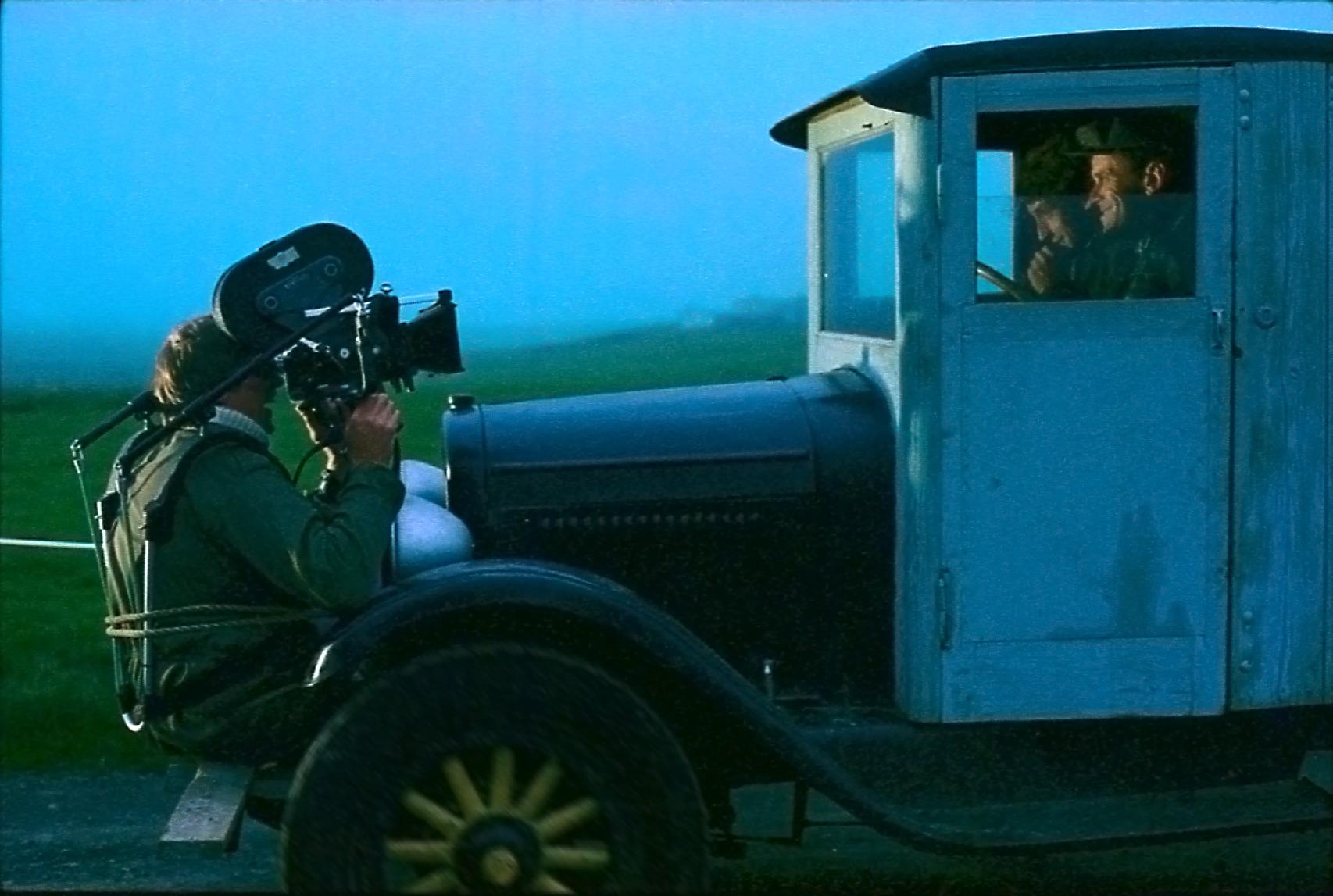Is the Icelandic language difficult? How do you pronounce Reykjavik or, better yet, Eyjafjallajokull? How do you read the Icelandic alphabet? Are there any similarities between English and Icelandic?
Foreigners both complain about and admire the Icelandic language; however, almost everyone agrees that it’s difficult to learn. For first-time visitors, some of the Icelandic place names and people’s names can be tongue twisters.
Why You Can Trust Our Content
Guide to Iceland is the most trusted travel platform in Iceland, helping millions of visitors each year. All our content is written and reviewed by local experts who are deeply familiar with Iceland. You can count on us for accurate, up-to-date, and trustworthy travel advice.
Although some visitors get the hang of the Icelandic language, these words remain impossible to pronounce for others. Practically no one gets the hang of how to pronounce Icelandic names quickly, so don’t be too hard on yourself if you find it difficult. Icelanders are used to it and appreciate you trying, no matter how much you may get their names wrong.
In this guide, we’ll cover the Icelandic alphabet and the basics of Icelandic pronunciation, as well as some of the hardest Icelandic words and names. To start, here is some interesting trivia about Icelandic names: Icelanders don't use surnames; they just add -dóttir (daughter) or -son (son) after one of their parents' first names, traditionally the father's.
Key Takeaways About the Icelandic Alphabet and Language
- The Icelandic alphabet has 32 letters, some of which are taken directly from runes from Iceland's history.
- Many of Iceland's longer words, like Eyjafjallajokull, might seem confusing at first, but are actually combinations of shorter words.
- Despite their many differences, the English and Icelandic languages have many similarities.
- Even though the Icelandic language itself has changed much throughout history, modern words are added by a special word committee.
- Icelanders are proud of their unique language, and the country has a 100 percent literacy rate.
- There are many useful phrases in the Icelandic language that visitors can use during their time in the country.
The Icelandic Alphabet
As the capital city and home of the country's primary international airport, Reyjavik is often visitors’ first and last destination in Iceland. As such, it would be nice to know how to pronounce the name of the city you are in, so let’s start with that.
Reykjavik is pronounced with an “a” and “ee” sound rather than the “e” and “i” used in its spelling. Written phonetically, it would look something like this: RAYK-YAH-VEEK. The name loosely translates as “Smoke Cove,” similar to the city’s nickname, Smoky Bay.
If you are still unsure how to pronounce Reykjavik, the video below may help.
Let's start with the essentials, the Icelandic alphabet pronunciation. One of the biggest mistakes people make when trying to speak Icelandic is pronouncing Þ like a P (it’s NOT a P) or pronouncing J like the English way of saying J (with a sort of D sound).
Icelandic is a very phonetic language. When you’ve learned how to pronounce the letters, you can read and pronounce words correctly. The stress is always on the first syllable, and there are no silent letters, so it's best to enunciate.
There are 32 Icelandic letters:
Aa
Áá
Bb
Dd
Ðð
Ee
Éé
Ff
Gg
Hh
Ii
Íí
Jj
Kk
Ll
Mm
Nn
Oo
Óó
Pp
Rr
Ss
Tt
Uu
Úú
Vv
Xx
Yy
Ýý
Þþ
Ææ
Öö
Notice there’s no C, Q, W, or Z in the modern Icelandic alphabet. Z was used until 1973, and if you come across it, it’s pronounced like an S in older texts.
All of the regular vowels (A, E, I, O, U, and Y) have identical Icelandic vowels with a comma over them. This comma is not an accent but signifies a different vowel with a different sound.
In addition, the Icelandic alphabet has the vowels Æ and Ö. So, in total, there are 14 vowels in the Icelandic alphabet and 18 consonants.
Most letters sound the same in Icelandic as they do in English, but there are still some differences. Here's an overview of each and how to pronounce Icelandic letters.
Ð – ð: This letter that looks like a D with a line through it when it’s a capital letter is sometimes confused for an Ó when it’s in lowercase. In fact, this letter sounds identical to TH in the words “the,” “they,” or “then.”
G – g: The letter G is identical to the English G in some words, such as “golf” (golf), “gata” (street), or “gefa” (give). Sometimes, there’s a soft pronunciation of the letter G, such as in “vegur” (way/road) or “skógur” (forest). This soft G is similar to G in the English words “thing,” “design,” or “campaign.”
H – h: The H is pronounced like a regular H in English – EXCEPT when it’s combined with a V, then it sounds like a K. This happens, for example, in all of our question words:
- What - “hvað:” kvath
- Who - “hver:” kver (also the word for hot spring)
- When - “hvenær:” kven-I-r
- How - “hvernig:” kvernig
- Why - “af hverju:” af kveryu.
J – j: The letter J presents people with some difficulties. It’s not hard to pronounce – but the pronunciation is not the same as English. The Icelandic J is pronounced like the English Y. A great example is “jójó” (yo-yo), which is pronounced the same way. “Jól” (yule/Christmas) and “eyja” (island) are pronounced as “yol” and “A-ya.” The English word “jazz” is pronounced “djass” in Icelandic.
L – l: A regular L is pronounced the same as an L in English. The trouble starts when there’s a double L, such as in the word “jökull” (glacier). The double L has a slight click sound and can best be described as pronouncing it as TL (so, yökutl – more on Ö later).
R – r: The R in Icelandic is rolled. You can get away with rolling it just a little bit, but if you can roll it properly, you’ll be able to pronounce “Reykjavík:” RAkyaveek (smoky bay) like a local.
V – v: The letter V is pronounced like V in English or like a W. There’s no W in Icelandic, and most of the time Icelanders won’t hear the difference between V and W. You can have fun with that. Ask them to talk about videos, VCRs, and other words beginning with a V in English.
Þ – þ: The famous Icelandic Þ. Þ appears in many words, most notably in “Þingvellir” (parliament fields) on the Golden Circle. This is NOT a P, so please don’t ever pronounce Þingvellir as Pingvellir. Or write it down like that. Þ is pronounced like TH in the word “thing” or “think,” and an acceptable way to write Þingvellir if you have no Þ in your keyboard is Thingvellir.
Æ – æ: Simply, Æ is pronounced like an uppercase I. Always. You can also remember it as sounding like YE in the word “bye” (bæ).
Ö – ö: Ö is different from O (pronounced like O in the English word “ought” or “fought”) and Ó (pronounced like the English O in “oh” or “over”). Ö is pronounced like U in the word “urn,” “murmur,” or “under.”
Additionally, the combination of a couple of letters makes them sound different. These combinations are:
Au: When A is combined with U (AU), it’s pronounced differently. I can’t think of an example of it occurring in English, but it kind of sounds like a combination of Ö+I (öi).
Ei / Ey: The combination of E and I (EI) or of E and Y (EY) sound the same. And it’s pronounced like a capital A or AY in the word “way.” An Icelandic example is “eyja:” A-ya (island).
You can find more details on Icelandic alphabet pronunciation on Wikibooks.
How to Pronounce Reykjavik
As the capital city, Reykjavik is often visitors’ first and last destination in Iceland. As such, it's nice to know how to pronounce its name correctly.
Reykjavik is pronounced with an “a” and “ee” sound rather than the “e” and “i” used in its spelling. Written phonetically, it would look something like this: RAYK-YAH-VEEK. The name loosely translates as “Smoke Cove,” similar to the city’s nickname, Smoky Bay.
If you are still unsure how to pronounce Reykjavik, the video below may help.
How to Pronounce Eyjafjallajokull
When the Eyjafjallajokull Volcano erupted in 2010, the entire world noticed, mainly because international flights were halted. However, one of the most entertaining things to come from that eruption was how news reporters and tourists butchered the pronunciation of the volcano: EYJA-FJALLA-JOKULL. There are some great examples in the videos below.
What’s Up With All of These Long Icelandic Words?
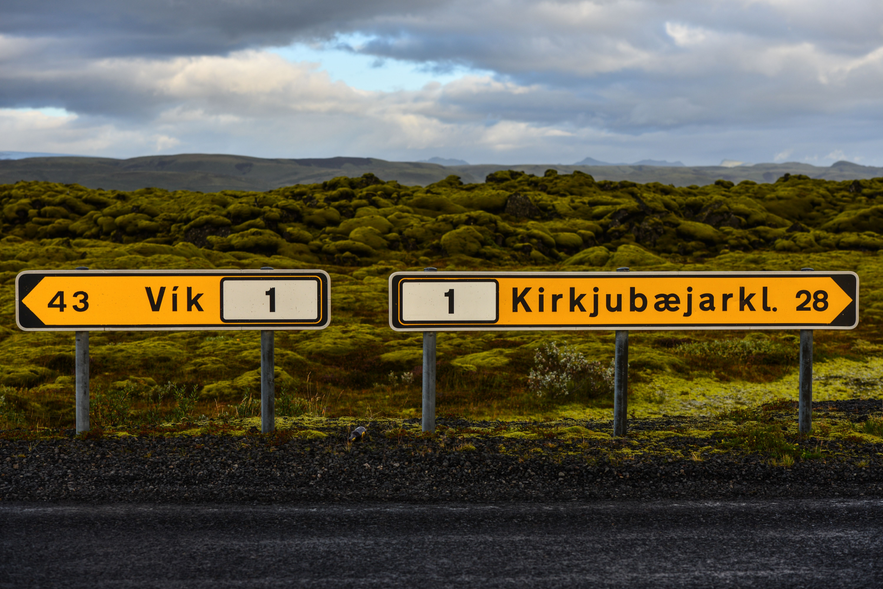
All of these words are combined words.
Let's break down Eyjafjallajokull, probably the most internationally known Icelandic volcano after the 2010 eruption. This word consists of three separate words: “eyja” (island), “fjall” (mountain), and “jokull” (glacier).
So the daunting task of pronouncing Eyjafjallajökull is a little easier when you break it down, just as Islandmountainglacier would look like a tricky word to say if it were a single English word, though it’s okay when it’s three separate words.
The same applies to the other long place names previously mentioned:
- “Þingvellir” is composed of the words “þing” (parliament) and “vellir” (fields), meaning ParliamentFields.
- “Kirkjubæjarklaustur” is a combination of “kirkja” (church), the possessive form of “bær” (town), and “klaustur” (convent), meaning ChurchTown’sConvent.
- “Jökulsárgljúfur” is three words, the possessive form of “jökull” (glacier), the possessive form of “á” (river), and the word “gljúfur” (canyon), meaning Glacier’sRiver’sCanyon.
- The town “Egilsstaðir” in the East of Iceland means Egil’s place, and Egill is a man's name.
- Finally, “Fjaðrárgljúfur” means FeatherRiver’sCanyon, deriving from “fjaðrir” (feathers), “ár” (river), and “gljúfur” (canyon).
As you can see, most place names in Iceland are very see-through. Eyjafjallajökull is indeed a glacier on a mountain on an island. The parliament used to gather at the fields of Þingvellir. And there used to be a convent at Kirkjubæjarklaustur.
Icelandic is not the only language that has a habit of combining words into a single long one.
It’s also prominent in German, such as in the word “kugelschreiber” (Icelandic: kúlupenni, English: ball-pen). English also has many words combined, although there are seldom more than two (blacksmith, cheesemonger, heartache).
Are There Any Similarities Between Icelandic and English?
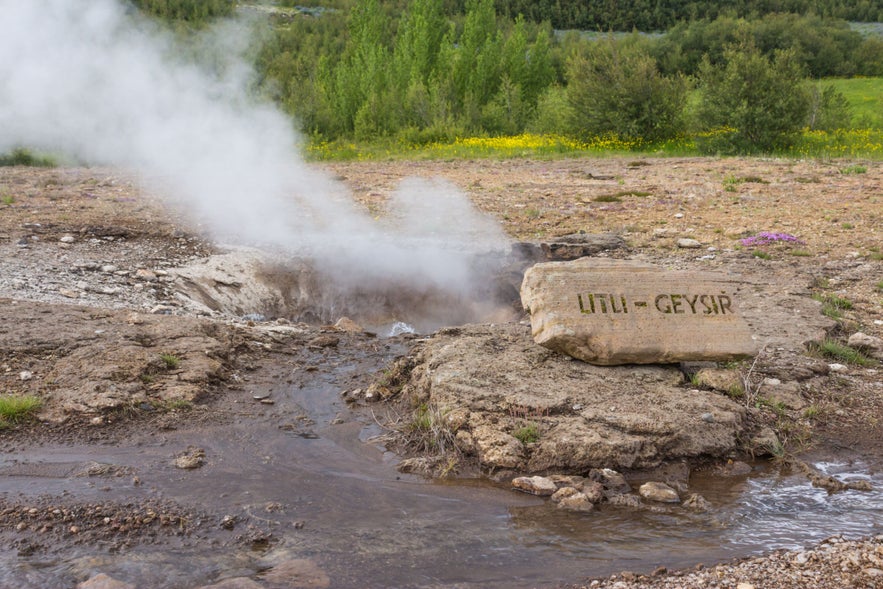 There are PLENTY of similarities between Icelandic and English. Icelandic has at least two internationally known words: “Geyser” and “Saga.” The word “geyser” derives from Iceland’s biggest geyser, Geysir (a key stop on Golden Circle tours), and the Icelandic Sagas written in the 1200s are great examples of epic sagas. The word “saga” simply means “story” in Icelandic.
There are PLENTY of similarities between Icelandic and English. Icelandic has at least two internationally known words: “Geyser” and “Saga.” The word “geyser” derives from Iceland’s biggest geyser, Geysir (a key stop on Golden Circle tours), and the Icelandic Sagas written in the 1200s are great examples of epic sagas. The word “saga” simply means “story” in Icelandic.
There are many more similarities between Icelandic and English words than just those two. Maybe you’ve seen some in the examples given above (“dóttir” = daughter, “jól” = yule, “gefa” = give, “vegur” = way).
According to the Icelandic sagas from hundreds of years ago, during Viking times, people in Iceland shared a language with the Scandinavian people and could communicate with people living in England without much difficulty.
Iceland is an isolated country, and its language has stayed relatively unchanged and close to its roots throughout the centuries. Today, it’s the closest you can get to the shared Old Norse.
The same cannot be said about English. For example, besides being influenced by Nordic languages, there are many French, German, Latin, and Greek influences in English, i.e., Rendez-vous, déjà-vu, Zeitgeist, biology, philosophy, zoology, curriculum vitae, etc.
The Icelandic language is quite similar to many old words in English. The term “you” was, for example, taken up in England quite recently and replaced “thou,” “thy,” and “thee” because it was more similar to the fashionable formal address “vous” in French.
“Thou” or “thy” isn’t too far off from “þú” (Icelandic for the singular form of “you”), and “thee” isn’t far from “þér” (a form of “þú” and the old way of addressing people politely).
There’s no “polite” way of addressing people in modern Icelandic, such as “Sie” or “Vous” in German and French. Everyone uses the word “þú.” On that note, everyone is also addressed by their first name, and never by their surname.
The word “eyja” (that you should be familiar with now) can be shortened to “ey” and still mean "island.” That would explain the names of the Orkney Islands, Jersey, and Guernsey.
The English word “husband” doesn’t have an obvious meaning behind it, but it’s very similar to the Icelandic word “húsbóndi” which translates as “house farmer” or “man of the house.” “Húsbóndi” isn’t commonly used as a term for a husband in the sense of “man and wife” (or “man and husband”) in Icelandic anymore. That word is now “eiginmaður” (that translates to “a man of your own”).
In addition, many old English place names are similar to Icelandic words. For example, mountains with the word “fell” in them (i.e., Scafell Pike and Cross Fell), which is an obvious connection to the Icelandic word for mountain: “fjall.”There are also tons of similar words related to fishing and the sea, such as “gangvegur” (gangway), “skip” (ship), “bátur” (boat), “fiskur” (fish), “akkeri” (anchor), “sjór” (sea), etc.
What’s Special About the Icelandic Language?
Icelandic is an ancient language that hasn’t changed much throughout the centuries. New Icelandic words are frequently invented, and, in theory, anyone can create a new word.
A special word committee makes up new words for every new invention or slang that’s thrown our way. Some words have gained more popularity and are now used in everyday speech, while others don’t fare as well.
Although many languages use the same root of a word for new inventions (and old roots for words such as chemistry, biology, or psychology), Iceland is determined to make its own unique words for every word there is.
Many stable words such as “land” = land, “vín” = wine, “hús” = house, and “glas” = (drinking) glass are similar and easy to learn. On the other hand, newer words such as “tölva” (computer), “sjónvarp” (television), or “rafmagn” (electricity) are very different from one another.
The word for computer, “tölva” is a combination of the old term “völva” (fortune teller) and the T from the word “tala” (number). So, essentially, “computer” is “numeric teller” in Icelandic.
The word “sjónvarp” (television) is composed of the words “sjón” (sight) and “varp” (projection).
“Rafmagn” (electricity) is composed of “raf” (electron) and “magn” (mass). So many words make total sense when you know the individual words within them, such as “ísskápur” (ice closet = fridge) or “frystikista” (frozen chest = freezer).
The Icelandic Language Is Popular
Icelanders are very proud of their language, and indeed, there’s a 100 percent literacy rate in the country. There’s also an endless amount of Icelandic books to discover. According to statistics, one in every five Icelanders will write a book in their lifetime. Before every Christmas, there’s a surge of new books being released, and this rush is aptly named “jolabokarflod” or “YuleBookFlood.”
- See also: Icelandic Literature for Beginners
Icelandic Phrases and Sayings
Iceland has many peculiar and fun phrases and sayings, and in every Easter egg, there will always be an old saying inside. Many people think that the expression inside their Easter egg is even more of a treat than the chocolate itself.
Many Icelanders make an effort to speak correctly and keep up to date on new words. A popular television series from 2013 called Orðbragð plays with Icelandic words and dissects the language, and it was popular enough for a second series in 2015.
And you can read about new Icelandic words on the side of your milk cartons. The language is rich in words, but many words have double or triple meanings, meaning word puns are popular in (completely untranslatable) jokes.
Is Icelandic One of the Hardest Languages in the World?
Icelandic is known for being a hard language to learn. For Western Europeans and people with English as their native language, it’s still not that hard. Sure, Icelandic has many forms, and words change a little depending on the sentence they’re used in.
Sometimes, Icelanders speak in the in-breath and have more than a dozen words for “snow,” but it’s a very phonetic language. This means that letters always sound the way they sound (very different from English and French, for example, but similar to Spanish). The alphabet is Latin and familiar to Western European languages.
If you’re extremely good with languages, it’s even possible to learn how to speak Icelandic in just one week. This was proven by Daniel Tammet from the UK back in 2004. Learning a new language is always hard.
But if you already know English, Icelandic shouldn’t be too difficult, at least not as much as learning a language with a different structure and alphabet, such as Chinese, Arabic, or Russian. And as for European languages, Welsh has got to be more difficult than Icelandic!
There are some useful websites where you can learn Icelandic online, either for free or for a small fee. These include icelandiconline.com and italki.com. You can also learn Icelandic online or attend classes in Iceland at the Tin Can Factory. Their courses include visiting galleries or band rehearsals, cooking Icelandic recipes together, and more.
Useful Phrases in Icelandic for First-Time Visitors
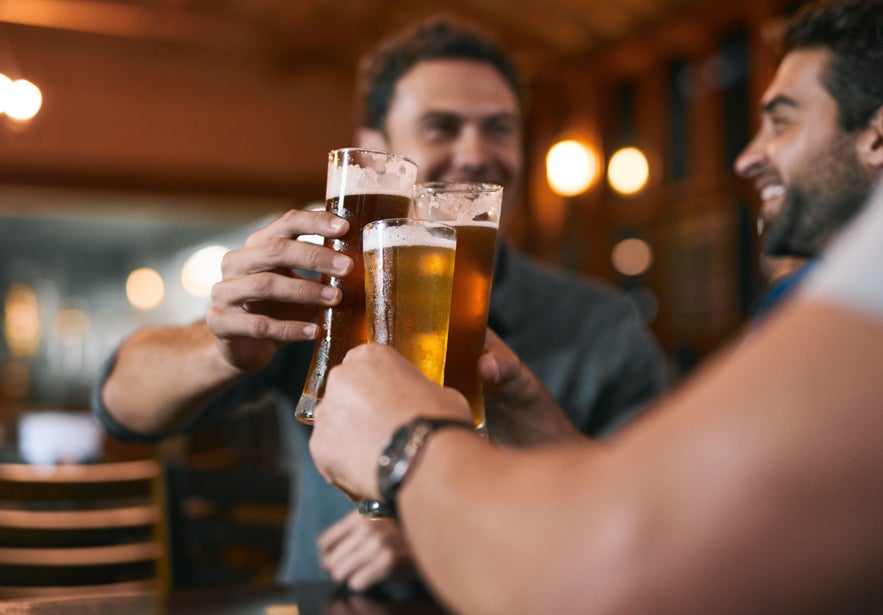 While becoming an expert overnight isn't a necessity, knowing how to speak Icelandic words can make your time in the land of ice and fire a little easier. A few helpful phrases from the Icelandic language you should learn before your trip include:
While becoming an expert overnight isn't a necessity, knowing how to speak Icelandic words can make your time in the land of ice and fire a little easier. A few helpful phrases from the Icelandic language you should learn before your trip include:
Halló - Hello
Hæ - Hi
Bless - Goodbye
Já - Yes
Nei - No
Takk - Thanks
Takk fyrir - Thank you
Takk sömuleiðis - Thanks, likewise
Góðan daginn - Good morning / good day
Góða kvöldið - Good evening
Góða nótt - Good night
Hvað kostar þetta? - How much does this cost?
Hvar er næsti hraðbanki? - Where is the next ATM?
Einn bjór, takk - One beer, thanks
Skál - Cheers
Ég ætla að fá ... - I'm going to have …
Ég heiti ... - My name is ...
Ég er frá ... - I am from ...
Gaman að kynnast þér - Nice to meet you
Sjáumst - See you
Sjáumst seinna - See you later
Takk fyrir síðast - Thanks for last time
Velkomin / Velkominn - Welcome
Gæti ég fengið vatnsglas? - Could I have a glass of water?
Ég er að læra íslensku - I am learning Icelandic
Ég tala reiprennandi íslensku - I speak fluent Icelandic
Hvernig berðu þetta fram? - How do you pronounce this?
Hvar er ráðhúsið / Harpa / Hallgrímskirkja? - Where is the city hall / Harpa / Hallgrímskirkja?
Mælir þú með góðum veitingastað / bar? - Do you recommend a good restaurant / bar?
Hvað er fiskur dagsins? - What’s the fish of the day?
Hvað er réttur dagsins? - What’s the dish of the day?
Veistu símanúmerið hjá ...? - Do you know the phone number for ...?
Ég elska… - I love…
Ég elska þig - I love you
Another exchange to note, if you’re invited to dinner, it’s customary to end the meal by saying “takk fyrir mig” (“thanks for me,” meaning “thanks for the meal”). The host usually replies, “verði þér að góðu,” which translates to “may it be of good use to you”. This exchange marks the end of the meal and signals it’s time to clear the table or get up.
The same exchange can take place if you’re leaving a party and saying goodbye to your host, where you can also use the plural “takk fyrir okkur” (“thanks for us”) if you’re more than one person.
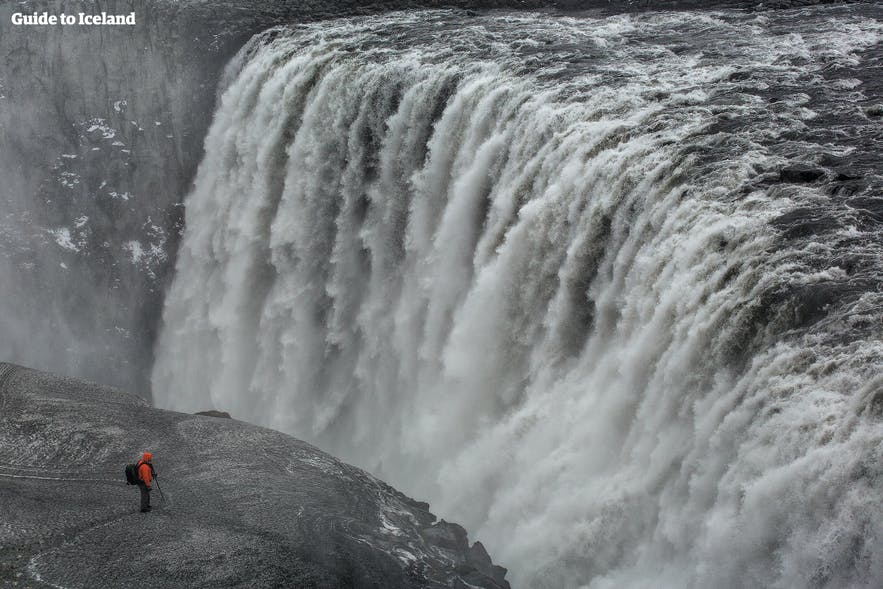
FAQs About the Icelandic Language
Here are some of the most frequently asked questions about the Icelandic language.
Is the Icelandic Language Connected to Viking Runes?
The Icelandic language has strong historical ties to the runic alphabet, known as the “futhark”, which was used by early Norse settlers. Several characters in the Icelandic language are taken directly from runes, such as Þ. Despite how much has changed throughout the country's history, runes remain an important part of Icelandic cultural identity.
What Other Languages Are Similar to Icelandic?
Icelandic is closely related to Faroese and certain dialects of Norwegian. These languages share a common ancestor in Old Norse but have evolved differently over time.
While Norwegian has changed over the centuries because of the influence of other languages, the same can not be said for Icelandic. As a result, Icelandic is actually closer to Old Norse than modern Norwegian.
Do You Need to Speak Icelandic in Iceland?
Speaking Icelandic in Iceland is not strictly necessary. Most Icelanders speak English fluently and are used to speaking it. This makes it easier for travelers from English-speaking countries to visit and interact with Icelanders.
Hear the Icelandic Language Yourself!
Learning how to pronounce Icelandic letters and words isn't mandatory by any means if you're planning a trip to Iceland. However, knowing the basics of the Icelandic language can help you out during your travels and show appreciation for the country's culture.
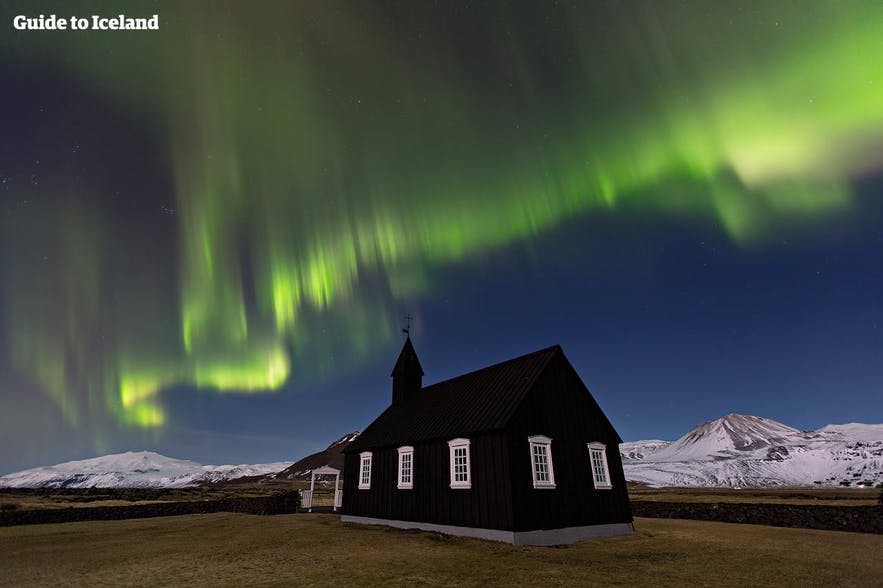
Whether you’re booking a vacation package with guided activities or planning one of Iceland’s popular self-drive tours, a little language knowledge can go a long way. From reading road signs to understanding menus or exchanging a polite “takk fyrir” with your host, it adds an extra layer of connection to your Icelandic adventure.
What did you learn the most from our Iceland pronunciation guide? Tell us your thoughts in the comments below!


